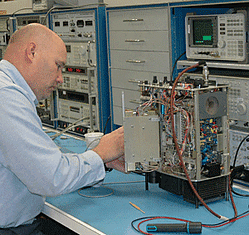Contributed by James Hood, Team Leader - Duncan Aviation Calibration Services

Using tools while out of proper calibration can compromise aircraft performance and safety.
It happens. You are returning a tool to the toolbox and you miscalculate your reach and it drops to the floor. Does it need to be recalibrated? The short answer is yes. But do you know why?
When a measuring tool experiences a sudden deceleration from a fall, a quick visual inspection could lead to the conclusion there is no concern. But be warned, it isn’t what you see that’s important, it’s what you don’t. The damage doesn’t have to be great in order to cause an improper reading from a calibrated tool.
A torque wrench dropped from an elevated surface to the hangar floor, could have internal parts broken. For instance, on a click-style torque wrench, if the wrench is set to its lowest setting the drop could cause the pivot block to shift out of position. And it only takes a slight bend in the rod of a micrometer or caliper to cause the readings to be off because mating surfaces don’t match.
Other popular tools that could be damaged in a fall are pressure gauges. Some have fragile insides that are easily broken or warped. When crimpers fall to the ground, the dies could be damaged or misaligned.
Whether it’s calipers, micrometer, digital level or torque wrenches, using tools that are not within calibration tolerances compromises aircraft performance, component life and in some cases safety.
After dropping your tool on the hangar floor, err on the side of safety and have it properly tested for calibrated performance before you put it back in your toolbox.
Questions? Call Duncan Calibration Services at 402.479.1698.


